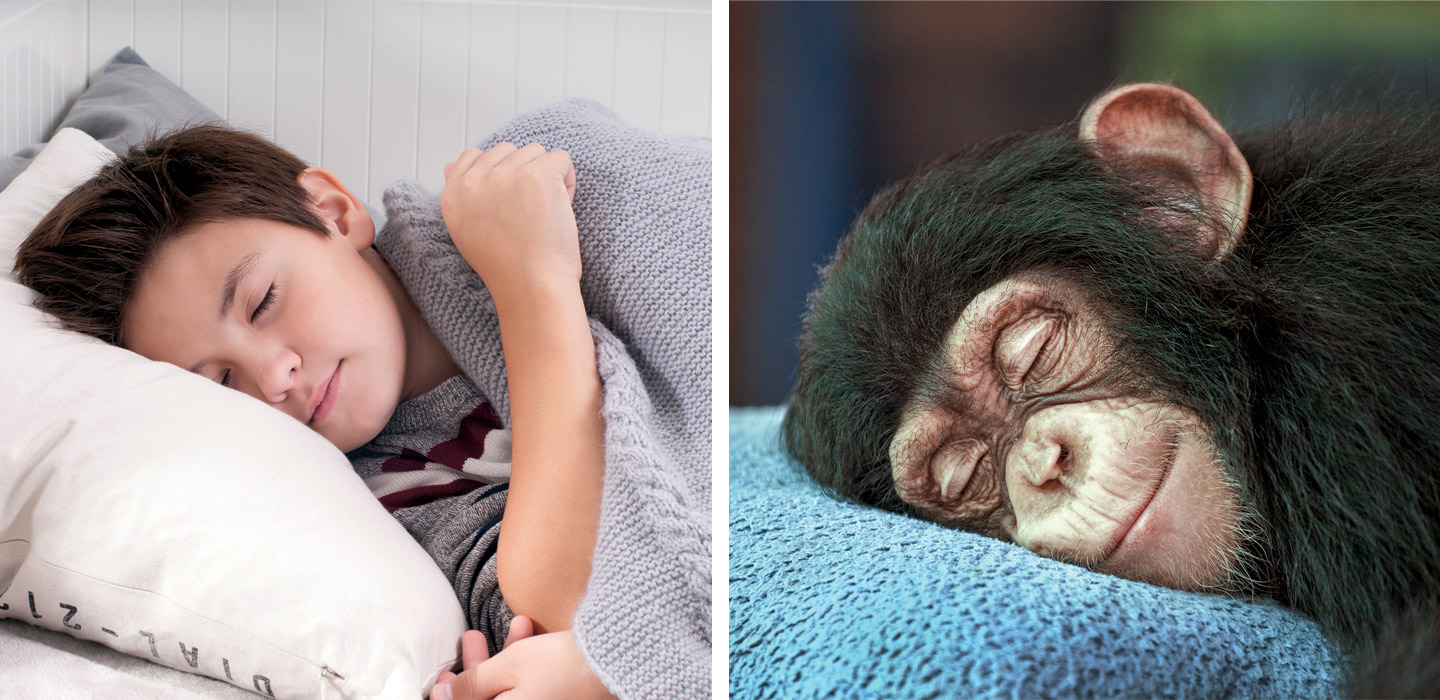Deep in a forest in Africa, a chimpanzee gets ready for bed. Every night, it climbs 15 meters (50 feet) up a tree. It collects branches and twigs to weave into a platform. Then it plucks leaves to make a comfy pillow. When the bed is complete, the chimp climbs in and dozes off.
A chimpanzee gets ready for bed. It lives deep in a forest in Africa. The chimp climbs 15 meters (50 feet) up a tree. It collects branches and twigs. The animal weaves them into a mattress. Then it plucks leaves to make a comfy pillow. The bed is finished! The chimp climbs in and dozes off.

